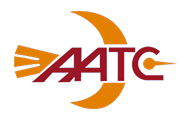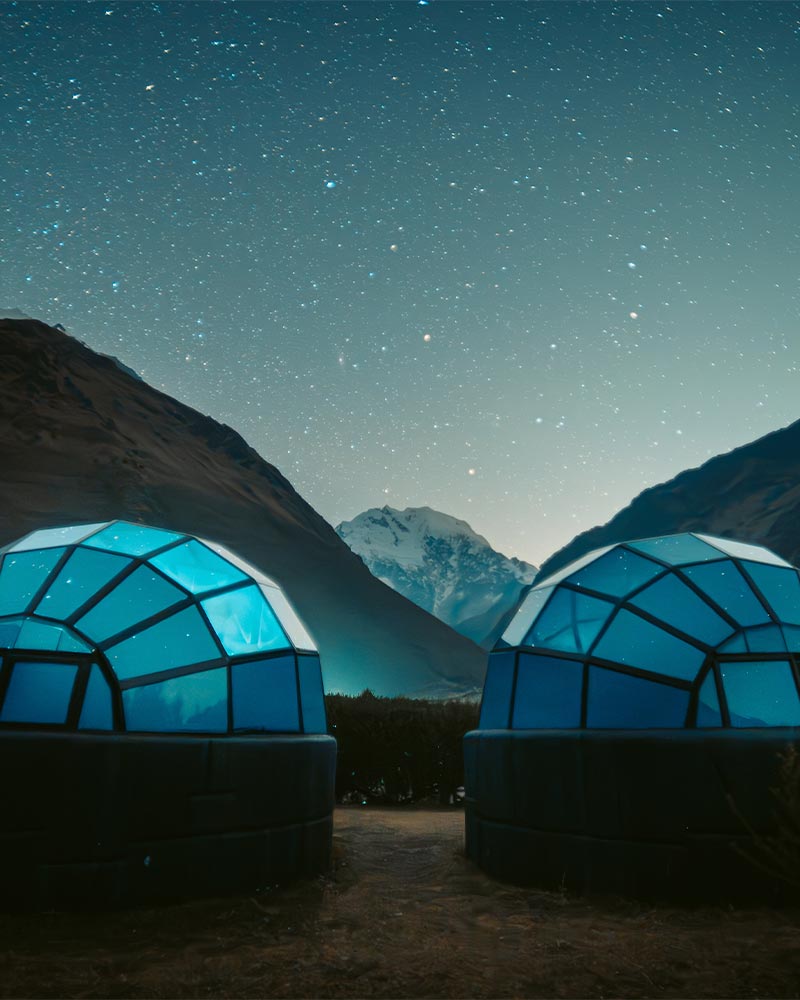The Inca Trail is one of the most popular treks in the world, and most definitely the most sought after in Peru. Perhaps you’ve already booked your space or you’re still umming and ahhing.
Whatever the case, you likely have a lot of questions about the trek and how to plan the perfect trip. Don’t worry. We’ve scoured the internet and taken into consideration the questions we receive from our trekkers to compile the ultimate list of Inca Trail FAQs.
Before reaching out with a general inquiry, we recommend you read through this page to see if you can find the answer you’re looking for, along with our Salkantay trekking information and Peru travel information pages.
The Inca Trail is one of the most popular treks in the world, and most definitely the most sought after in Peru. Perhaps you’ve already booked your space or you’re still umming and ahhing.
Whatever the case, you likely have a lot of questions about the trek and how to plan the perfect trip. Don’t worry. We’ve scoured the internet and taken into consideration the questions we receive from our trekkers to compile the ultimate list of Inca Trail FAQs.
Frequent Questions
Here is a list of the frequently asked questions of our passengers
-
Is the Inca Trail Worth It?
We can say that the Inca Trail is 100% worth it! It’s one of the best treks in the world, according to National Geographic and many other sources. On this amazing route, you get to:
- Retrace ancient steps along a path that’s hundreds of years old.
- Visit many archaeological sites that you only get to see on this route.
- Learn a great deal about the fascinating ancient culture of the Incas.
- Hike through some of the most beautiful landscapes in the Andean mountain range.
- Discover unique flora and fauna.
- Sleep in the arms of Mother Nature in the middle of the Andes.
- Enter Machu Picchu through the Sun Gate—only possible on this route.
- Explore one of the New Seven Wonders of the World—Machu Picchu.
-
Is the Inca Trail Difficult?
Salkantay Trekking rates the Inca Trail as a moderately difficult trek. This is because you’ll be hiking at high altitudes and along tough uphill climbs at some points. However, other days aren’t so challenging, which is why the overall difficulty rating is moderate.
-
How Far in Advance Should I Book the Inca Trail?
We recommend you book your Inca Trail place as early as possible. Most days sell out at least 3 months in advance for the low season (Nov–Mar) and then 6 months in advance for the high season (Apr–Oct).
Note: Even if you book before these suggested periods, we cannot guarantee your place on the trail as there’s no knowing exactly when they’ll sell out.
-
Do I Need to Carry My Own Luggage on the Inca Trail?
No. You don’t need to carry your trekking backpack or the duffel bag we provide you with. We have a team of porters who carry these for you. However, they go at a much faster pace, so you’ll need to carry a small backpack with the supplies you need during the day, like water, snacks, a camera, etc
-
Can I Leave My Luggage at the Salkantay Trekking Office?
Yes, of course. While you go on your trek, you can leave your extra luggage with us in our office where it will be safe and secure until you return.
You can bring it with you when you attend the briefing, or you can bring it on the morning of the trek and our driver will bring it back to our offices. Speak to your guide and Salkantay representative at the briefing to organize for it to be dropped off at your hotel for your return.
Alternatively, don’t hesitate to ask your hotel if they can keep it for you. Most will have a locked storage room and this might be easier for you if you’re returning to the same one.
-
How Many Inca Trail Routes Are There?
There are four Inca Trail routes to choose from. These are known as:
- The Salkantay & Inca Trail (7 Days)
- The Classic Inca Trail (4 Days)
- The Two Day Inca Trail (2 Days)
- The One Day Inca Trail (1 Day)
-
How Many People Are Allowed on the Inca Trail Every Day?
With The Inca Trail being one of the most popular treks worldwide, you might be worried about large crowds. You don’t need to worry.
The Peruvian government wants to preserve the trail as much as possible, and they’ve put a limit to the number of trekkers who can hike each day. Only 500 people can enter the trail a day. In February, the Inca Trail is closed for cleaning and maintenance.
-
How Many People Will Be in My Group?
The maximum number of people in a group on our treks is 16. However, we can head out with a minimum of 2. It usually depends on the time of year and whether it’s high or low season.
-
How Far Do We Walk Each Day?
On average, you’ll walk around 6 or 7 hours a day along the Classic Inca Trail. If you want to take a closer look at each day in detail, you can check out the itinerary on the Salkantay Trekking website. Below is a quick overview of the distance you’ll cover each day:
- DAY 1: 14 km / 8.7 mi
- DAY 2: 16 km / 9.94 mi
- DAY 3: 9 km / 5.59 mi
- DAY 4: 5 km / 3.11 mi
-
Where Will We Sleep on the Inca Trail?
On the Inca Trail, we’ll set up tents every day at the campsite for you to sleep in.
-
How Much Does the Inca Trail Cost?
The cost of the Inca Trail may vary depending on who you travel with. With Salkantay Trekking, we have three options for hiking the Inca Trail. The prices per person for a group tour are as follows:
- ONE DAY INCA TRAIL — $400 USD
- SHORT INCA TRAIL 2 DAYS — $550 USD
- CLASSIC INCA TRAIL 4 DAYS — $780 USD
- PRIVATE INCA TRAIL 4 DAYS — $1200 USD
- SALKANTAY AND INCA TRAIL 7 DAYS — $1100 USD
-
Can I Rent Equipment for the Inca Trail?
On all of our routes, we provide you with the accommodation—in this case tents—and a sleeping mat. But, if you need to hire other pieces of equipment, we do have some available.
Every item we use is of the highest-quality and from the best brands around. There are some pieces you can rent in advance or at the briefing. These are:
- A sleeping bag for -15°C and a sleeping bag liner.
- Thermarest luxury air mattress.
- Adjustable walking sticks.
If you already own these items, you’re able to take them on the trek. You’ll just need to keep the weight restrictions in mind.
-
How Can I Prepare Physically for the Trek?
The Inca Trail is moderately challenging and you’ll be hiking up to some high altitudes. Trekking up to Dead Woman’s Pass (4,215 m / 13,829 ft) is the most difficult part of the trek. This day you’ll also walk 16 km and for 10 hours.
For this reason, we suggest you do plenty of physical preparation to enjoy the trek as much as you can and so it doesn’t pose too many challenges. Check out these prep tips for the Inca Trail.
- Do plenty of cardiovascular exercise while you’re at home. Include lots of hikes and ensure they’re over varied terrain and a few days.
- Eat a well-balanced diet to give your body all the right nutrients and energy it needs. While you’re on the trail, we’ll be giving you highly nutritious meals.
- Make sure you get to Cusco 2–3 days before your trek begins to allow you to acclimate. Otherwise, you have a higher risk of getting altitude sickness, which could ruin your trek.
- This is exactly physical prep, but you must use worn-in hiking boots. New ones can cause blisters and a lot of pain.
-
Is Water Included on the Trip?
Yes. You’ll need to take water for the first morning, but after this, we’ll give you water at every meal. The water we provide is clean and safe to consume.
We recommend you take a bottle you can refill or a Camelbak. Plastic bottles aren’t a good idea as they can ruin the route and we believe in sustainable tourism.
-
What Is the Food Like on the Trek?
The food is often a highlight of the trip for many hikers. Every single one of our chefs is professionally trained and they do an incredible job of cooking some delicious meals in the middle of the mountains.
We know that nutrition is extremely important on the trek as you’ll be putting in a lot of physical effort and need plenty of energy. For this reason, we’ve worked closely with trained chefs and expert nutritionists to put the best menu possible together for the Inca Trail.
At each meal, you’ll find an array of dishes for you to choose what you want to eat. We use fresh, local ingredients to make some traditional foods that’ll blow you away.
If you suffer from allergies or eat a special diet, just let us know at the briefing or when you book and we’ll ensure you eat as well as everyone else.
Not only do you get these outstanding meals; we also give you a cloth bag and provide you with snacks each morning. You can eat these at any stage in the day when you need an energy boost. You also get “tea time” every afternoon with plenty of drinks and snacks before dinner
You definitely won’t be going hungry when you join Salkantay Trekking on the Inca Trail.
-
Do I Need to Bring Extra Money for the Trek?
Yes. We always recommend you take extra money in case of an emergency. You’ll also need some in Aguas Calientes if you want to enjoy the hot springs and for your last lunch before heading back to Cusco.
-
Do I Need a Permit for the Inca Trail?
Yes. For the Inca Trail you need to reserve a special permit. Be aware that this needs to be done well in advance. The trek sells out months beforehand and there are only 500 places a day on the route.
-
Can I Do the Trek with Kids
Yes. If you’d like to enjoy the Inca Trail with your children, it’s definitely possible. We recommend they’re at least 8 years old and in excellent physical condition. We don’t recommend you travel with children on the trail if they aren’t accustomed to regular hiking and lots of physical exertion.
-
Will I Have Wifi During the Trek?
No. Along the Inca Trail, you won’t find anywhere with WiFi. The only place you’ll have internet access is if you visit a restaurant with WiFi in Aguas Calientes when you come down from Machu Picchu.
-
Will I Be Able to Charge My Devices During the Trek?
No. There’s nowhere to charge your electronics along the Inca Trail. We highly recommend taking a powerpack to keep your camera and/or phone charged to take some amazing photos.
-
Will I Have Access to Bathrooms Along the Trek?
Yes. Salkantay Trekking takes portable trekking toilets with them along the way and you’ll also find very simple and rustic bathrooms at the campsites. You’ll need to make sure you take toilet paper in case there isn’t any.
-
Will I Be Able to Have a Shower During the Trek?
No. Along the Inca Trail, there are no showers, so you’ll have to wait until you get back to Cusco.
-
Can I Rent Horses During the Trek?
No. On the Inca Trail, there isn’t the option of hiring an extra horse.
-
What Is the Difference Between the 1, 2, 4, and 7 Day Inca Trails?
As you’ve seen, there are 4 different Inca Trails available. The one day trek just takes you on a short part of the trail for a day and then brings you back to Cusco.
On the two day trek, you’ll enjoy a short part of the Inca Trail and then spend the night in Aguas Calientes. On the second day, you visit Machu Picchu.
The four day Inca Trail is the classic option and what most trekkers opt for. You’ll be hiking along the original Inca Trail and camping each night. You’ll enter Machu Picchu from the Sun Gate and visit lots of archaeological sites along the way.
Finally, the seven day trek takes you along a part of the Salkantay Trek before you join the Inca Trail. Then, you’ll be visiting the many archaeological sites and entering Machu Picchu through the Sun Gate. You’ll also be camping every night on this trail.
-
When’s the Best Time of Year to Trek the Inca Trail?
The best times of year to trek the Inca Trail are April, May, September, and October. This is because they are on either side of the rainy season and also months where there aren’t quite so many tourists. The weather is very pleasant and you should get some amazing views of Machu Picchu.
-
Can I Join as a Solo Traveler?
Yes, you can, but only if we already have an Inca Trail group booked for that day. This is because we need a minimum of two people to open up a group tour.
-
What Will the Weather Be Like on the Inca Trail?
The weather in Cusco is always unpredictable. Although there are specific wet and dry seasons. It’s impossible to say exactly what weather you’ll experience on the trek.
At the highest points, it’ll be pretty cold and you’ll need plenty of warm clothes for the first night. After, you’ll be hiking into lower altitudes as you get closer to Machu Picchu and you’ll feel the climate get much warmer.
The rainy season in Peru is from the end of October to April, but there’s always the chance that it might rain—whatever the season. For this reason, we always recommend you take a rain jacket or poncho as protection.
Find the Perfect Destination in Peru
With astonishingly varied landscapes, stunning scenery, compelling history, and a legacy of fascinating cultures, there is truly something for everyone. Our expeditions in Peru are designed to showcase all that this country has to offer.
Our expeditions in Peru are designed to showcase all that this country has to offer.











